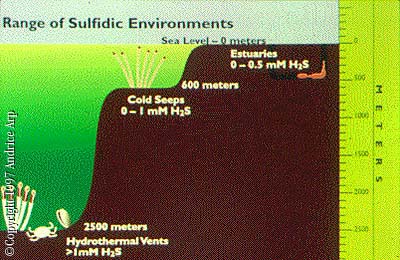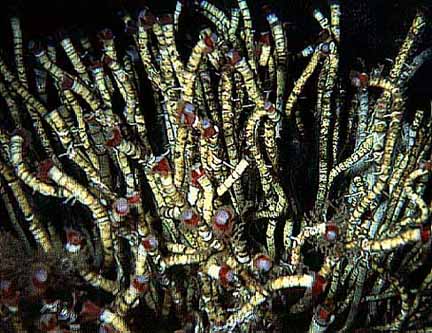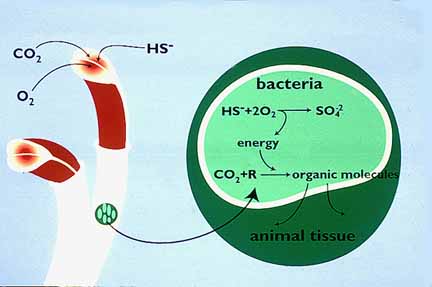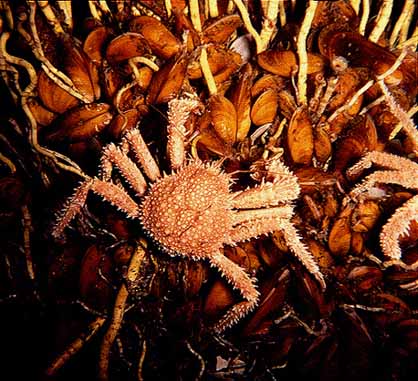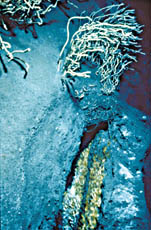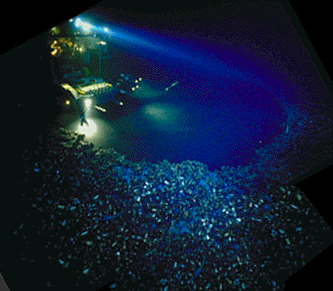
Cold Seeps
An ecosystem that many people
are not familiar with because of where it is
located is a cold
seep. Cold seeps
are shallow areas on the ocean floor where gases
percolate through underlying rock and sediment
layers and emerge on the ocean bottom. The gases
found in the seep are methane and sulfur-rich gases
and sediments releasing petroleum.Active seeps are
located in subduction zones, which are areas where
continental plates are being pushed. While the
seeps have only been studied for a short time,
there is much known about this ecosystem. Let's go
explore some of the organisms that are a part of
the cold seep environment. One type of organism that
lives in the cold seep is the tubeworm. These
tubeworms are cousins to the tubeworms
that live in the
hydrothermal vents. The tubeworms continue to
produce much excitement in the scientific
community. Just this year, it was published that
these organisms are the longest living
invertebrates. They are estimated to have a life
span of 170-250 years old. While they are similar
in length to their hydrothermal cousins (~ one-two
meters long), they are slow-growing with a rate of
one inch per year. The tubeworm, like many of
the organisms in the cold seep, experience a
symbiotic relationship with bacteria. This type of
bacteria is a chemolithotroph.
The bacteria lives in the trophosome in the center
of the tubeworm, where it combines hydrogen sulfide
from the water with carbon dioxide, and produces an
organic molecule that the tubeworm uses for
nourishment. Another organism found in the
cold seep is the mussel. The mussels, like the
tubeworm, also get much larger than related species
found in other places. Some mussels have a
symbiotic relationship with two different types of
bacteria: one that lives off methane, and the other
off sulfide. The methane-rich water (or sulfur-rich
water) is pumped into the mussel and across its
gils. The symbiotic bacteria in the gills use the
methane as carbon and energy source to provide
nourishments for the mussel.
While there are more organisms that can be found in the cold seeps, here is a good introduction to some of the more well-known types. The cold seep is general is thought to be a very stable environment for growth. While all organisms seem to grow much larger than normal, the growth is observed to be at a slow rate.Because of the slow and dependable release of gases, organisms seem to also have long lifespans in the cold seeps.
|
